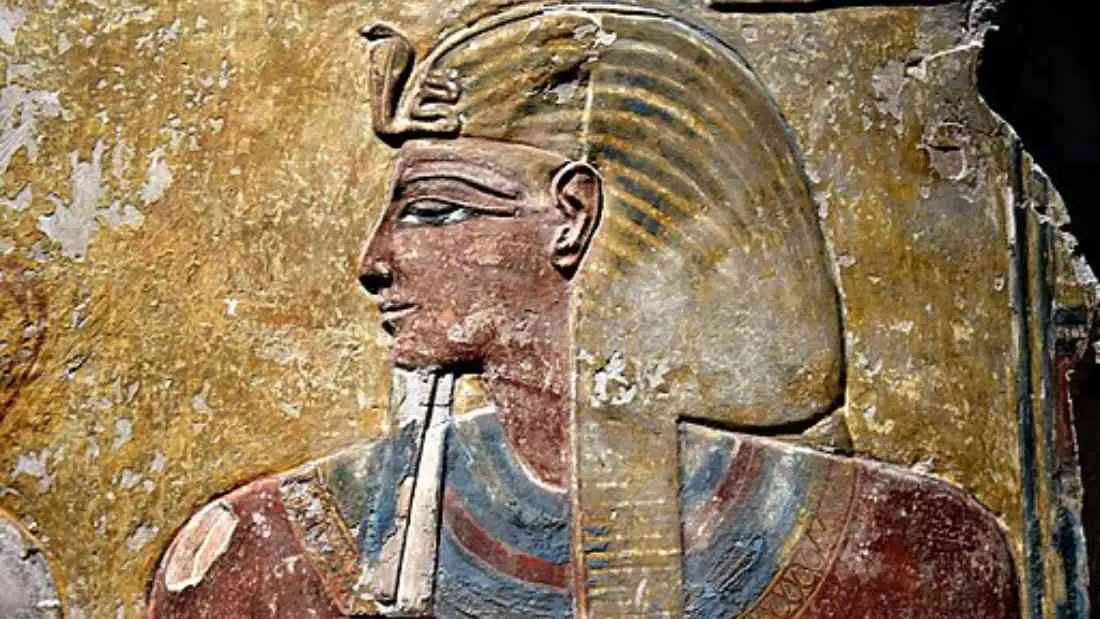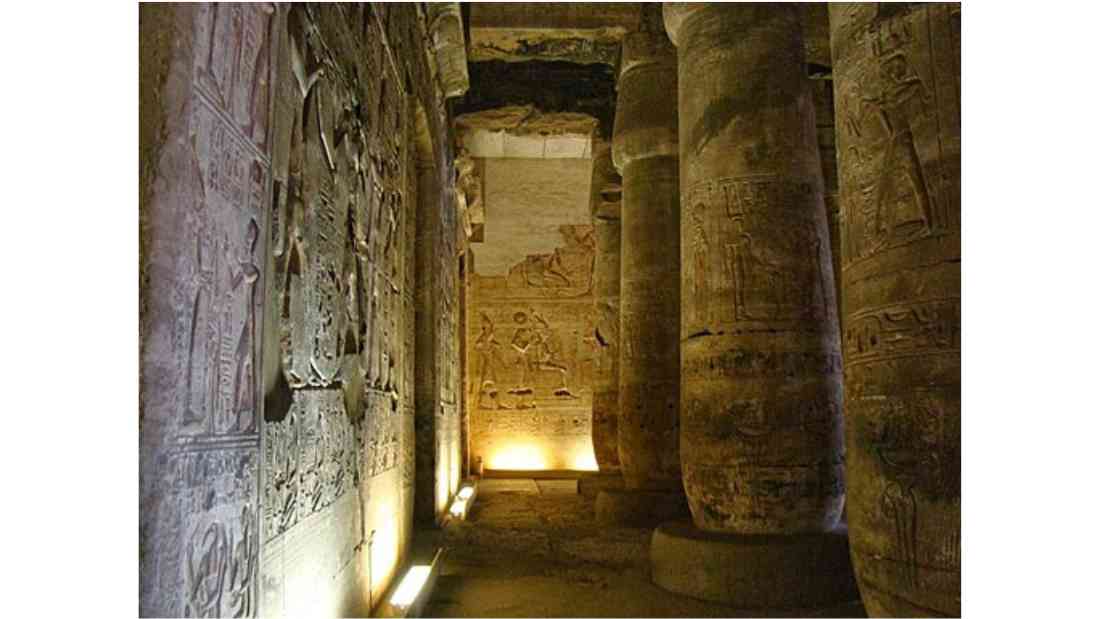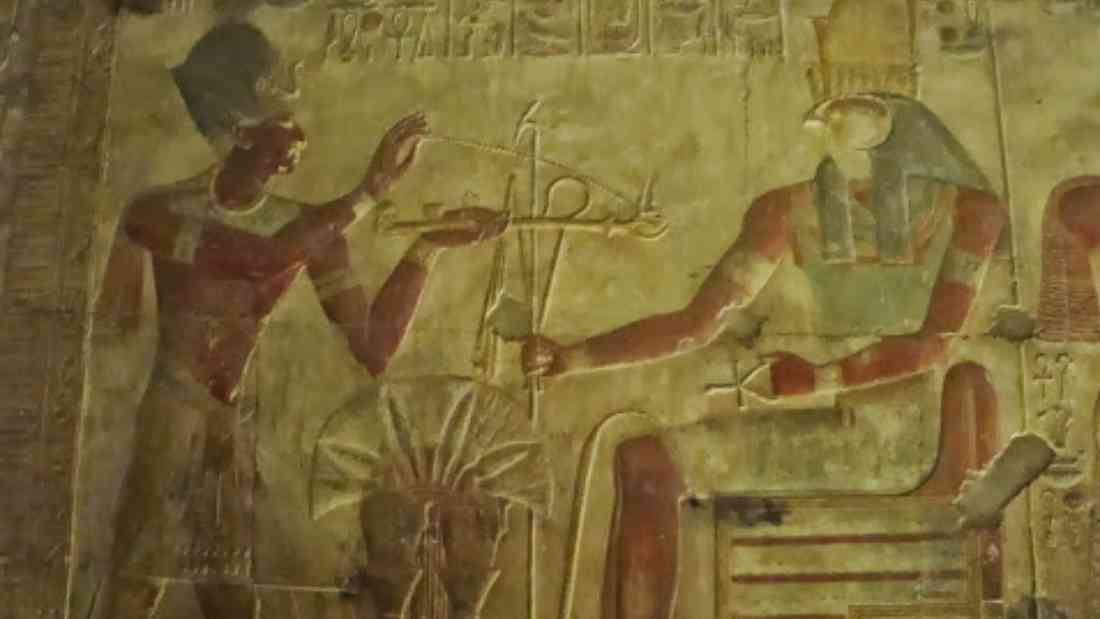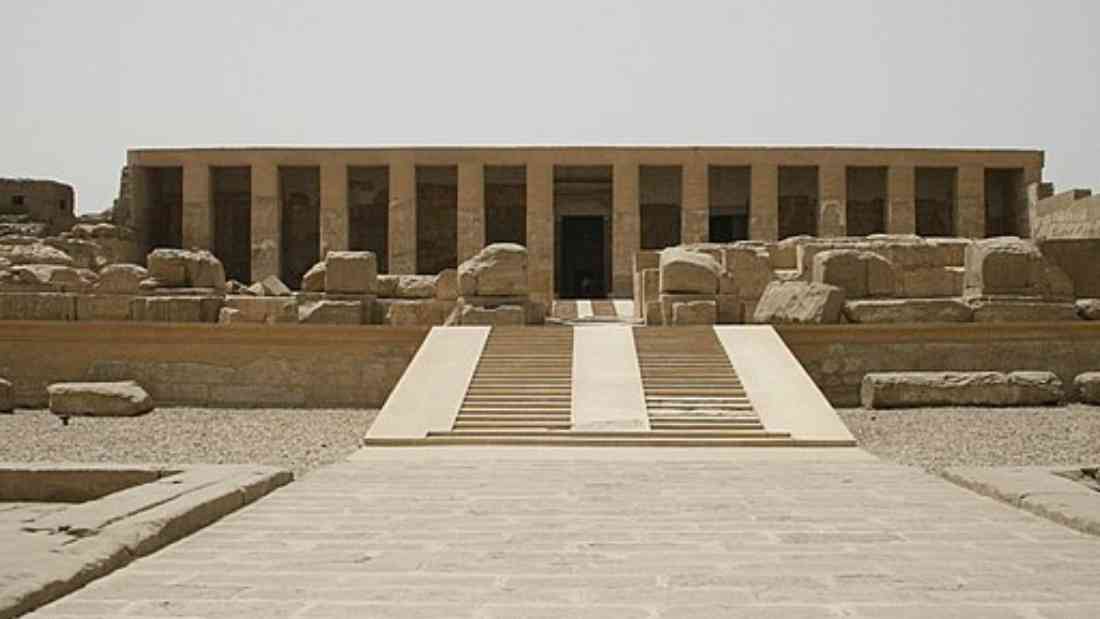The ancient Egyptian city of Abydos, located near the modern town of Al-Balyana in Sohag Governorate, is a treasure trove of historical and archaeological wonders. Among the many attractions of Abydos, the Temple of Seti I stands as a testament to the grandeur and innovation of ancient Egyptian architecture.
Pharaoh Seti I and the History of the Temple of Abydos
Seti I was a pharaoh of the New Kingdom Nineteenth Dynasty of Egypt, reigning from approximately 1290 to 1279 BC. He was the son of Ramesses I and Queen Sitre, ascending to the throne after the death of his father.
Known for his military achievements and for restoring the empire’s prestige after the tumultuous reign of the heretic king Akhenaten, Seti I embarked on numerous military campaigns to restore Egyptian dominance in regions such as Syria and Libya.
Seti I’s reign marked a period of stability and prosperity, laying the groundwork for the achievements of his son, Ramesses II, one of Egypt’s most famous pharaohs.
Additionally, he is celebrated for his contributions to Egyptian art and architecture, with the construction of the Temple of Seti I in Abydos standing as a testament to his dedication to religious and cultural revival.
The Temple of Seti I at Abydos was constructed in the late 13th century BC, serving as both a remarkable monument to Pharaoh Seti I and a significant religious center dedicated to the ancient Egyptian god, Osiris.
Abydos itself was believed to be the burial place of Osiris, making the Temple of Seti I a site of immense spiritual importance and a destination for pilgrims seeking blessings and communion with the afterlife.
Over the centuries, the temple not only withstood the tests of time but also evolved into a complex repository of Egyptian mythology and kingship ideology, immortalizing the names and deeds of pharaohs long gone.

Architectural Features of the Temple of Seti I at Abydos
The Temple of Seti I is renowned for its distinctive architectural features that showcase the zenith of ancient Egyptian craftsmanship. Its complex design and detailed reliefs not only exemplify the architectural ingenuity of the time but also offer a deep insight into the religious and cultural practices of ancient Egypt.
From its grand entranceways to the intricate artwork that adorns its walls, each element of the temple’s design was carefully constructed to honor the gods and commemorate the legacy of Pharaoh Seti I.
Unique Architectural Design
The Temple of Seti I at Abydos boasts a unique architectural design that distinguishes it from other Egyptian temples.
Unlike the linear progression seen in many other temples, the Temple of Seti I incorporates an L-shaped layout. This peculiar construction was due to Seti I’s death and the subsequent completion of the temple by his son, Ramesses II.
The L-shaped layout comprises two distinct axes – the main axis dedicated to Amun-Re, Re-Horakhty, and Ptah, and the second axis devoted to Osiris, Isis, Horus, and the deified Seti himself.
Hall of Kings
One of the most significant and awe-inspiring sections within the Temple of Seti I is the Hall of Kings, also known as the “Gallery of the Kings.”
This area features a list of seventy-six pharaohs, famously known as the “Abydos King List.”
Notable for its exclusion of certain “heretic” rulers like Akhenaten, this list provides valuable insights into how Seti I and his dynasty wanted to be remembered and associated with the legacy of Egyptian rulership.

Osiris Chapel
The Osiris Chapel is another critical component of the temple, dedicated to the god of the afterlife and resurrection, Osiris.
Within this chapel, intricate reliefs depict Seti I making offerings to Osiris and engaging in ceremonial activities.
These vivid decorations not only honor Osiris but also emphasize the pharaoh’s piety and his role as the intermediary between gods and men.
Decorative Reliefs and Inscriptions
The Temple of Seti I is renowned for its detailed reliefs and inscriptions, which are among the finest in any Egyptian temple. These decorations cover the walls, columns, and ceilings, portraying the pharaoh in various traditional roles – worshiping the gods, defeating Egypt’s enemies, and performing ritual ceremonies.
These bas-reliefs constitute a comprehensive record of the pharaoh’s reign, including his military campaigns and offerings to the gods.
The artistry and craftsmanship evident in these reliefs highlight the significant advancements in Egyptian art during Seti I’s reign.

Columns and Roofing
The temple showcases a variety of column designs, including the closed-flower and open-flower styles associated with the papyrus plant, symbolizing Lower Egypt.
The roofing, partially reconstructed in modern times, originally featured stone slabs that allowed filtered sunlight to illuminate the interior, creating a dramatic and sacred atmosphere within the temple’s halls and chambers.
The architectural features of the Temple of Seti I at Abydos are a testament to the sophisticated design principles, religious beliefs, and artistic achievements of ancient Egypt. Its unique layout, combined with the richness of its decorations and the historical significance of its inscriptions, makes it a profound symbol of Egypt’s enduring legacy.
Pillared Halls and Bas-Reliefs
Walking into the temple’s interior, one is struck by the elegance of its architecture. Pillared halls, intricately carved with hieroglyphs and bas-reliefs, describe in great detail the religious and historical events celebrated by Seti I. These bas-reliefs are not mere decoration but a comprehensive record of the pharaoh’s reign, including his military campaigns and offerings to the gods.
The Osirion
Adjacent to the Temple of Seti I in Abydos lies one of the most mystifying structures of ancient Egypt, the Osirion. Believed to be a cenotaph or symbolic tomb of Osiris, the Osirion is located at a lower elevation than the temple itself, hinting at its symbolic representation of the underworld.
This architectural marvel is distinctive for its massive red granite blocks and a central hall surrounded by a moat, believed to have once been filled with water to mirror the primordial waters of creation according to ancient Egyptian mythology.
Archaeologists and historians debate the Osirion’s origins, with some suggesting it may predate the Temple of Seti I due to its unique construction style, reminiscent of earlier Egyptian architecture.
Its purpose, too, remains a topic of speculation, ranging from a funerary monument to a site for profound religious rituals connected to the Osiris myth. The presence of water channels and its alignment with significant celestial bodies point to its complex spiritual significance, possibly serving as a representation of Osiris’ journey through the underworld and his resurrection.

Archaeological Discoveries at the Temple of Abydos
The Temple of Seti I at Abydos has proven to be a treasure trove for archaeologists and historians, revealing insights into ancient Egyptian life, religion, and rulership. Excavations at the site have unearthed a wealth of artifacts, from pottery and statues to tools and texts, shedding light on the daily and ceremonial practices of the time.
One of the most significant discoveries was the uncovering of the Abydos boats, a fleet of wooden vessels buried near the temple, believed to be part of the funerary procession for Pharaoh Seti I. These boats symbolize the pharaoh’s voyage into the afterlife, underscoring the Egyptians’ belief in life after death and the importance of the Nile River in their cosmology.
Additionally, numerous tombs and burial sites around the temple have been excavated, including those of high priests and officials, providing valuable information on the social hierarchy and mortuary customs of ancient Egypt.
Concluding Thoughts on the Temple of Seti I at Abydos
The Temple of Seti I at Abydos stands as a monumental testament to the grandeur, religious devotion, and artistry of ancient Egypt. Its architecture and adornments speak volumes about the civilization’s sophistication and its people’s deep-seated beliefs in the afterlife and the divine.
Through the preservation of this site, contemporary scholars and visitors alike gain invaluable insights into the complexities of ancient Egyptian society, their rituals, and their reverence for their rulers and gods.
For Further Reading
Large Stockpile of Embalming Equipment discovered in Abusir
Mummification: Why did the Ancient Egyptians embalm their dead?
Saba Mahmood – a strong voice in the anthropology of religion and post-colonialism
Unravelling the Mysteries of Ancient Egyptian Symbols of Death – Anthropology Review
The Wrath of Montu – The Mythology of the Egyptian War God
Exploring the Egyptian Middle Kingdom – A Historical Overview
Examining the Rich Hues of Ancient Egyptian Paint
Ancient Egyptian Temples: Spiritual Centers of the Nile Civilization
The Symbolism and Significance of Ancient Egyptian Jewelry
The Pantheon of Ancient Egyptian Gods – A Comprehensive Guide
Temple of Seti I: An Architectural Marvel in the Ancient City of Abydos

